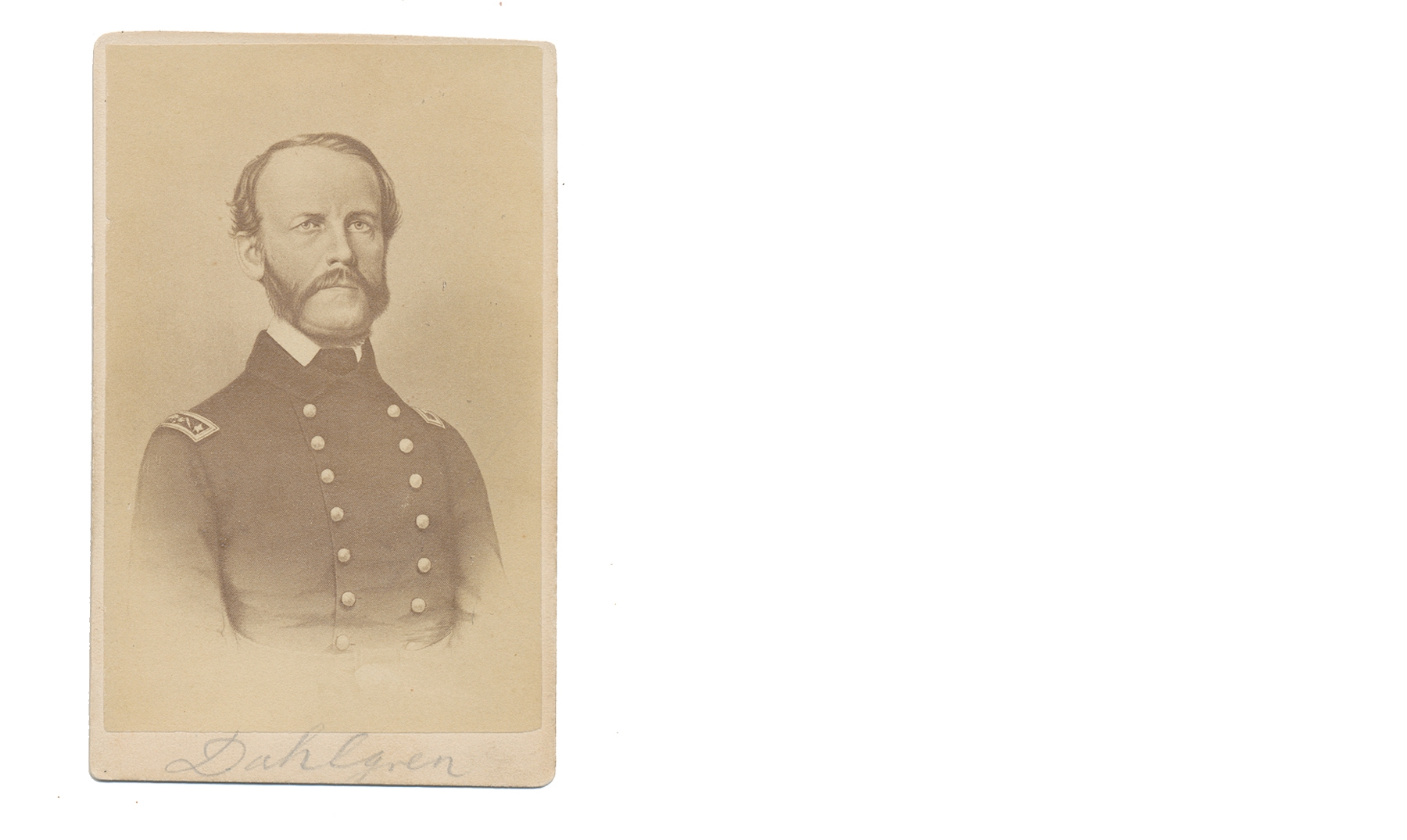site search
online catalog
CDV WARTIME LITHOGRAPH OF REAR ADMIRAL JOHN A. DAHLGREN

$25.00 SOLD
Quantity Available: None
Item Code: 855-47
CDV lithograph of Dalhgren in uniform of Rear Admiral. Image is clean and clear. Bottom of mount is inscribed “DAHLGREN” in period pencil.
Reverse has “DALAHGREN” again in pencil at top and a photographers imprint for THE NEW YORK PHOTOGRAPHIC CO.
Rear Admiral John A. Dahlgren (1809-1870): was a naval ordnance innovator and commander of the South Atlantic Blockading Squadron during the Civil War. Dahlgren became a midshipman in 1826. Service on the U.S. Coast Survey (1834-37) distinguished his early career. In 1847, Lieutenant Dahlgren was assigned to ordnance duty at the Washington Navy Yard. Over the next fifteen years, he invented and developed bronze boat guns, heavy smoothbore shell guns, and rifled ordnance. He also created the first sustained weapons research & development program and organization in U.S. naval history. For these achievements, Dahlgren became known as the "father of American naval ordnance." His heavy smoothbores, characterized by their unusual bottle shape, were derived from scientific research in ballistics and metallurgy, manufactured and tested under the most comprehensive program of quality control in the Navy to that time, and were the Navy's standard shipboard armament during the Civil War. Promoted to commander in 1855, captain in 1862, and rear admiral in 1863, he became commandant of the Washington Navy Yard in 1861 and chief of the Bureau of Ordnance in 1862.
With help from his friend Abraham Lincoln, Dahlgren took command of the South Atlantic Blockading Squadron in July 1863, and for the next two years led naval forces besieging Charleston in the Union navy's most frustrating campaign. Dahlgren cooperated magnificently with Army forces, but underhanded machinations by the ground force commander hindered the effort. Dahlgren's courage remained beyond question during naval attacks on enemy fortifications, but he never figured out how to counter the enemy's underwater defenses. As a leader, he took good care of his enlisted men, but failed to inspire his officers. After the war he commanded respectively the South Pacific Squadron, the Bureau of Ordnance, and the Washington Navy Yard.
Dahlgren made the USS Harvest Moon his Flagship on February 26th 1864. On February 29th 1865, the Harvest Moon struck a torpedo in Winyah Bay, South Carolina and sank. When he was relieved of the command of the Squadron in 1869, he returned to the Washington Navy Yard where he served until his death in 1870. [ad]
~~~~~~~~~~~~~~~~~~~~~~~~~~~~~~~~~
THIS ITEM, AS WITH ALL OTHER ITEMS AVAILABLE ON OUR WEB SITE,
MAY BE PURCHASED THROUGH OUR LAYAWAY PROGRAM.
FOR OUR POLICIES AND TERMS,
CLICK ON ‘CONTACT US’ AT THE TOP OF ANY PAGE ON THE SITE,
THEN ON ‘LAYAWAY POLICY’.
THANK YOU!
Inquire About CDV WARTIME LITHOGRAPH OF REAR ADMIRAL JOHN A. DAHLGREN
For inquiries, please email us at [email protected]
Most Popular
Historical Firearms Stolen From The National Civil War Museum In Harrisburg, Pa »
Theft From Gravesite Of Gen. John Reynolds »
Cavalry Carbine Sling Swivel »
Fine Condition Brass Infantry Bugle Insignia »
featured item
UNIFORM, LADDER BADGE AND MORE IDENTIFIED TO 3RD NEW HAMPSHIRE OFFICER BREVETED FOR BRAVERY IN BATTLE
Charles Augustus White was born in West Deering, New Hampshire on September 19, 1836. In 1840 the family moved to East Antrim and then Manchester. In 1847 his mother died and the family was broken up. White and one sister and one brother went to live… (1179-268). Learn More »




